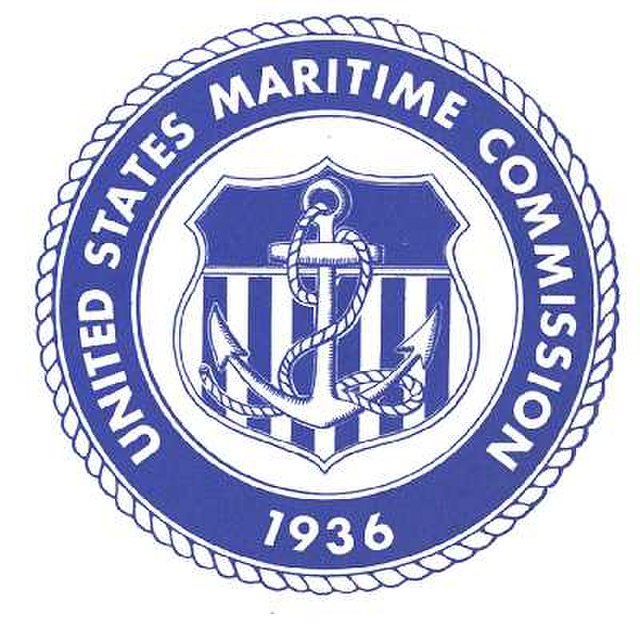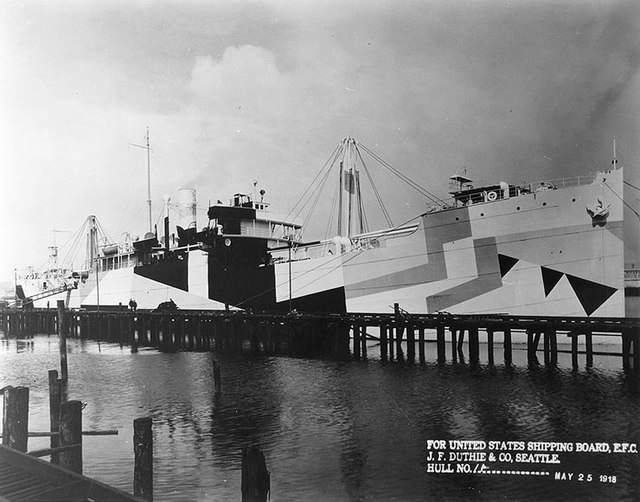United States Maritime Commission
The United States Maritime Commission (MARCOM) was an independent executive agency of the U.S. federal government that was created by the Merchant Marine Act of 1936, which was passed by Congress on June 29, 1936, and was abolished on May 24, 1950. The commission replaced the United States Shipping Board which had existed since World War I. It was intended to formulate a merchant shipbuilding program to design and build five hundred modern merchant cargo ships to replace the World War I vintage vessels that comprised the bulk of the United States Merchant Marine, and to administer a subsidy system authorized by the Act to offset the cost differential between building in the U.S. and operating ships under the American flag. It also formed the United States Maritime Service for the training of seagoing ship's officers to man the new fleet.
Seal of the United States Maritime Commission
WWII United States Maritime Commission poster
United States Shipping Board
The United States Shipping Board (USSB) was established as an emergency agency by the 1916 Shipping Act, on September 7, 1916. The United States Shipping Board's task was to increase the number of US ships supporting the World War I efforts. The program ended on March 2, 1934.
A World War I poster designed by James Daugherty for the US Shipping Board, ca. 1917–1918.
Kronprinzessin Cecilie at Bar Harbor, Maine
USS West Bridge, the commandeered British ship War Topaz





